- Home
- Encyclopedia
- A History of The Wyoming Capitol
A History of the Wyoming Capitol
The Wyoming Capitol has stood as a symbol of the spirit of the people of Wyoming for well over a century. Through struggles small and large, the state has persevered and thrived. Many additions, updates and improvements have been made to the physical building.
Established as a territory in 1869, Wyoming quickly garnered national attention when the first territorial assembly granted all women above the age of 21 the right to vote. This made Wyoming the first territory in the United States where women were granted the voting franchise. The suffrage act was motivated by a number of factors, including enticing more women to the territory to increase the population, bringing in more voters and genuine concerns that women should be allowed to vote.
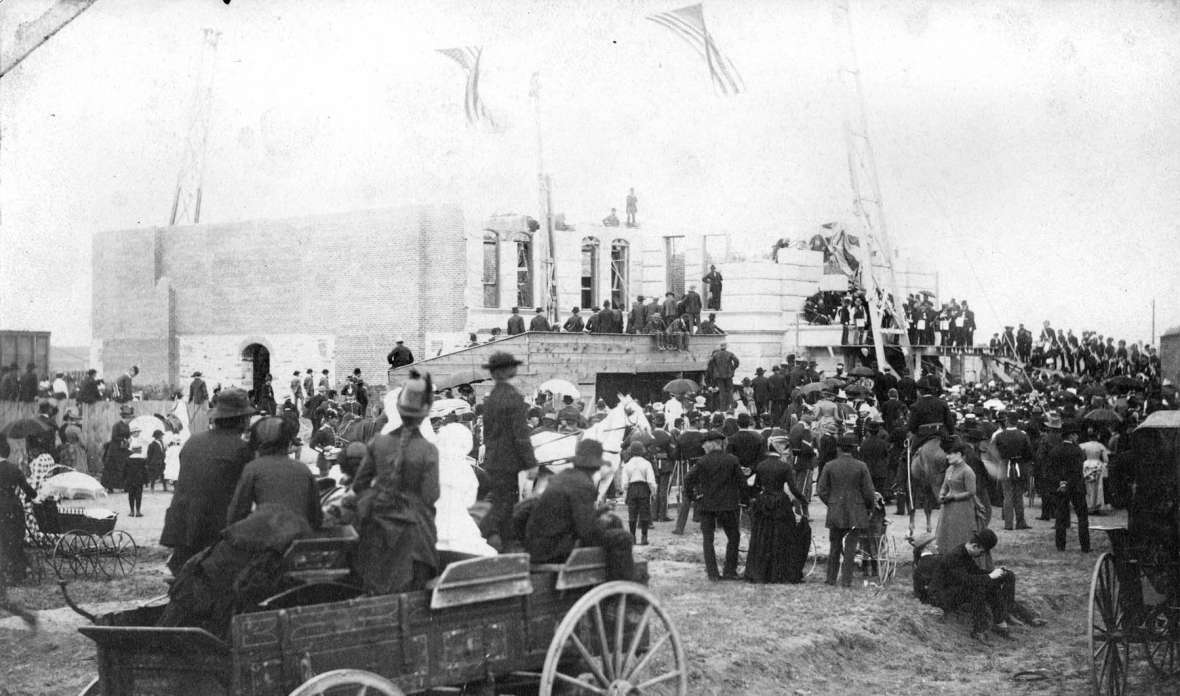
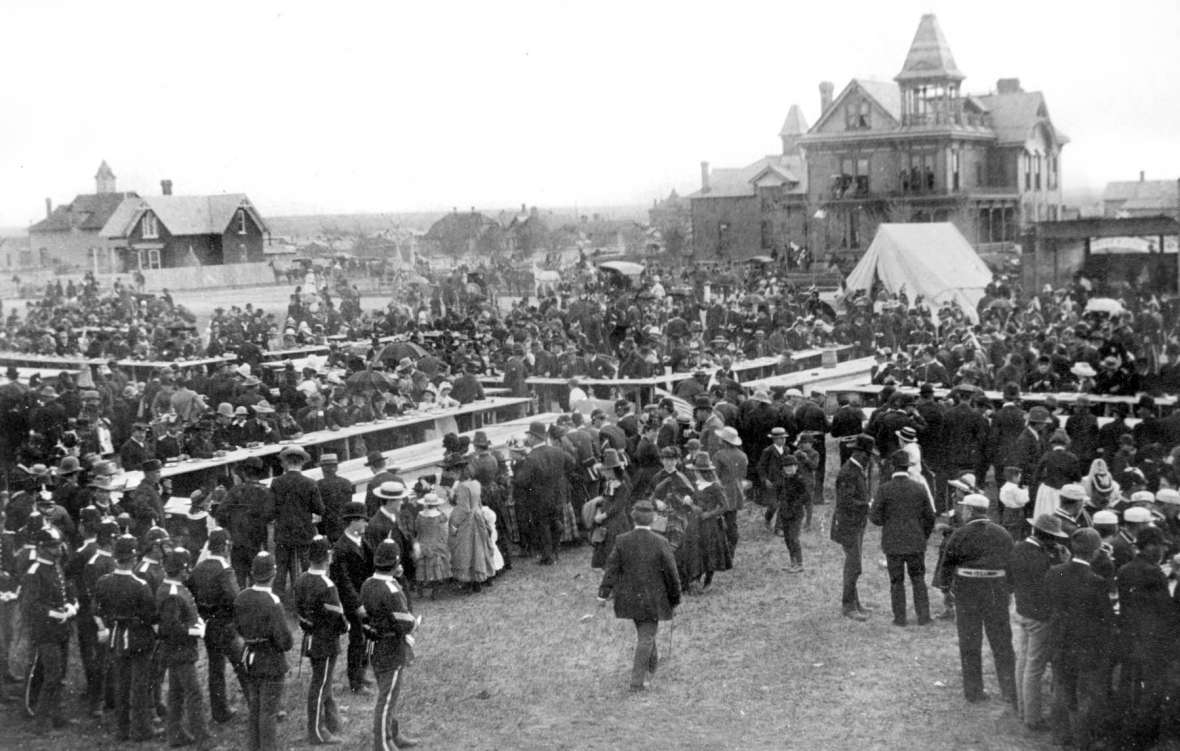
Wyoming was still sparsely populated in 1886 when Territorial Gov. Francis E. Warren spoke of a need for public buildings. The territorial legislature passed a bill authorizing the construction of a capitol at a cost not to exceed $150,000. Warren signed the bill on March 4, 1886, and appointed the Capitol Building Commission to take care of the details. The commission purchased a site on Hill Street, now Capitol Avenue, for $13,100. David W. Gibbs of Toledo, Ohio, was selected as the architect. The company of Adam Feick & Bro. of Sandusky, Ohio, submitted the winning construction bid of $131,275.13. The contractors broke ground on September 9, 1886.
In Ohio, the Feicks had completed several buildings similar to what commission members desired for the Wyoming Capitol. Since the distance was so great from Sandusky to Cheyenne, the Feicks subcontracted with Robert C. Greenlee of Denver to oversee the project and sent Adam Feick’s son, John, to supervise in Cheyenne.
Twenty-five-year-old John Feick arrived in Cheyenne on February 2, 1887. He wrote of his impressions of the climate and culture to his young bride, Lizzie, who remained in Ohio. He posted a short note to her on arrival: “I just arrived at Cheyenne right side up and handled with care. … [I]t is snowing & blowing bad enough to scare a man to death his first night.” He followed this by a longer letter. Feick’s original spelling and punctuation have been retained:
February 5, 1887
Dearest Wife:
I suppose you received the letter I wrote you when I arrived. I had quite a long trip, and feel very lonesome and homesick for you, to be fifteen hundred miles away from you and in a part of the country where you have to wear a belly-band to keep your cap on your head is a pretty bad thing.
There are very wealthy people living in this town but they all look to me like Cow-boys, Lizzie you can not imagine what kind of a country this is you can go just one hundred miles straight out in the country and not see a house or a living sole, but wolves, prarie Dogs, Deer, there are some very heigh hountains that you can see from Cheyenne that have snow on the top all the year around and the cars run to the top of them and that is 8000 feet heigher than Cheyenne. Cheyenne is just two and one half miles heigher in the air than Sandusky is, so you can imagine how the wind blows. I will close for two night and write you another letter in the morning, hoping to hear from you soon.
Your true & faithful husband,
John A. Feick
John boarded at several places in Cheyenne before constructing his own quarters in a small building near the Capitol that he referred to as his “castle.” He adapted to life in Wyoming and told Lizzie on March 15, 1887, “I begin to like this country better every day the grass is coming out green and the leaves are coming out on the trees, the air is so clear and pure that you can see one Hundred and fifty miles and see the snow on all the tops of Mountains.”
Work progressed on the Capitol and John wrote to Lizzie of the plans for laying the cornerstone:
May 2, 1887
Dearest Wife:
People here are going crazy over the cornerstone they have collected $1800.00 Dollars to lay it with, they are going to have a BarberCue, that is something that you or I never saw in the East, perhaps you don’t know what a Barber Cue is, if you don’t I’ll not tell you what is until you come to see it. The People of Cheyenne have appointed me on two commitees on Committee of arrangements, and on the Committee of receptions, so you see I don’t belong to you common people in Ohio any more. … If you come out here and stay till fall you can vote, all women have the right to vote when in the Territory 3 months.
Yours as ever,
John A. Feick
Although Lizzie was not present for the laying of the cornerstone on May 18, 1887, dignitaries and ordinary citizens gathered to celebrate the momentous occasion. The Cheyenne Daily Sun reported that the laying of the capitol cornerstone was “the occasion of the greatest military and civic demonstration ever witnessed in the history of the city.”
A copper box was placed in the cornerstone, containing such items such as the laws of Wyoming, an impression of the great seal, newspapers and photographs. The dedication ceremony included a speech by Territorial Judge Joseph M. Carey (who later became Wyoming’s territorial representative to Congress, U.S. senator and governor). Following the ceremony, the crowd thronged to the barbecue, where it dined on pork, mutton, roast beef, bread, cornerstone pickles and lemonade.
On May 26, 1887, John Feick wrote his wife, “I suppose by this time you know what kind of a time we had at the laying of the Corner Stone, people expect to have a larger time on Decoration day, [present Memorial Day] I tell you this is a great country for excitement. People are more liberal & a nicer class of people than you find in the east.”
Feick left Cheyenne in March of 1888, having completed his duties. The couple remained in Sandusky where John continued working with the family business, which continues today under the name of Feick Contractors Inc. and Feick Design Group Inc.
The Capitol Building Commission accepted the completed building from Adam Feick & Bros., and the commission submitted its final report on March 31, 1888. The territorial assembly had already passed a bill providing $215,000 for construction of additional public buildings including $125,000 for adding wings to the Capitol on its east and west sides, which were completed on April 4, 1890.
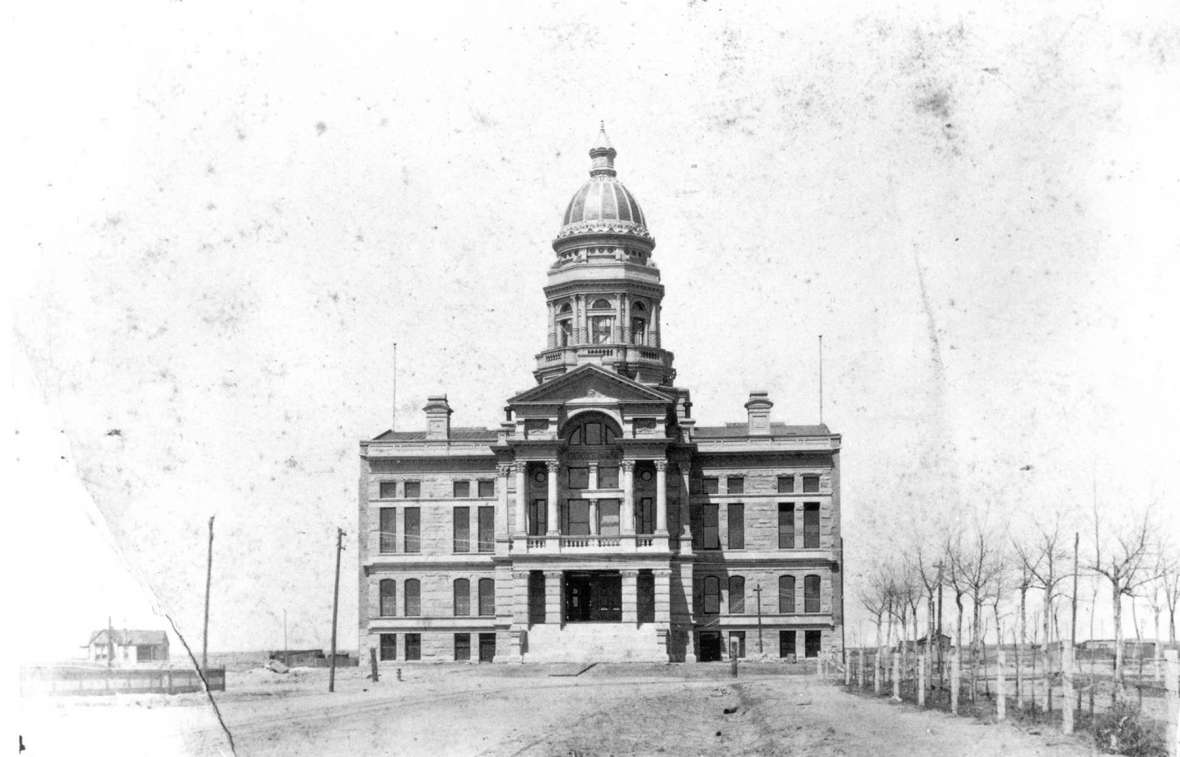

In 1889, the Wyoming Constitutional Convention met in the Territorial House Chamber of the new capitol. The two-story room included a public balcony, a stained-glass laylight and a brilliant chandelier. In this historic room, Wyoming reaffirmed the right of women to vote and included that right in the state constitution. The space also served as the Wyoming Supreme Court’s chamber and later housed the Legislative Service Office. Today, the historic Territorial House Chamber is once again restored as it was in 1889 and is a public meeting room. The Wyoming Capitol is designated a national historic landmark because of this room and the inclusion of women’s suffrage in Wyoming’s constitution.
On March 26, 1890, Wyoming Territory’s congressional delegate, Joseph M. Carey, introduced a bill calling for statehood. Because of its low population (estimated at around 62,000 in 1890), there was some opposition in the U.S. Congress. Despite those protests, including an objection to female suffrage, Wyoming became the 44th state when President Benjamin Harrison signed the bill on July 10, 1890.
The official celebration occurred in Cheyenne on July 23. Nearly 5,000 people attended the formal observance, which included a two-mile parade leading to the capitol, ceremonial speeches, a grand ball and fireworks.
The capitol has undergone many additions and upgrades since Wyoming became a state. Additional wings were added in 1917 with William Dubois of Cheyenne as the architect. In 1980 the Capitol underwent a $7 million upgrade with modern lighting, heating and air-conditioning systems and exterior maintenance, including restoration of masonry, rebuilding the dome and repainting of surfaces.
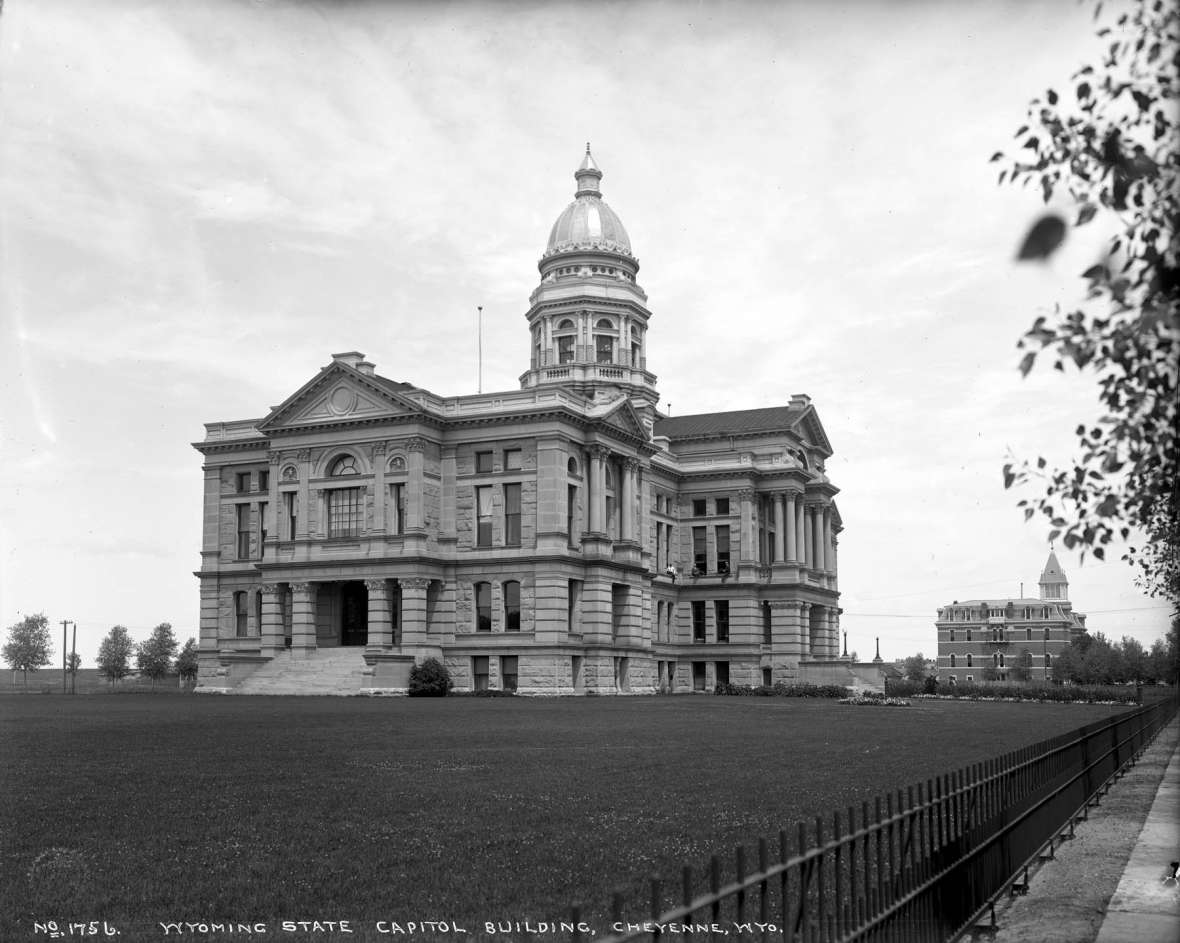
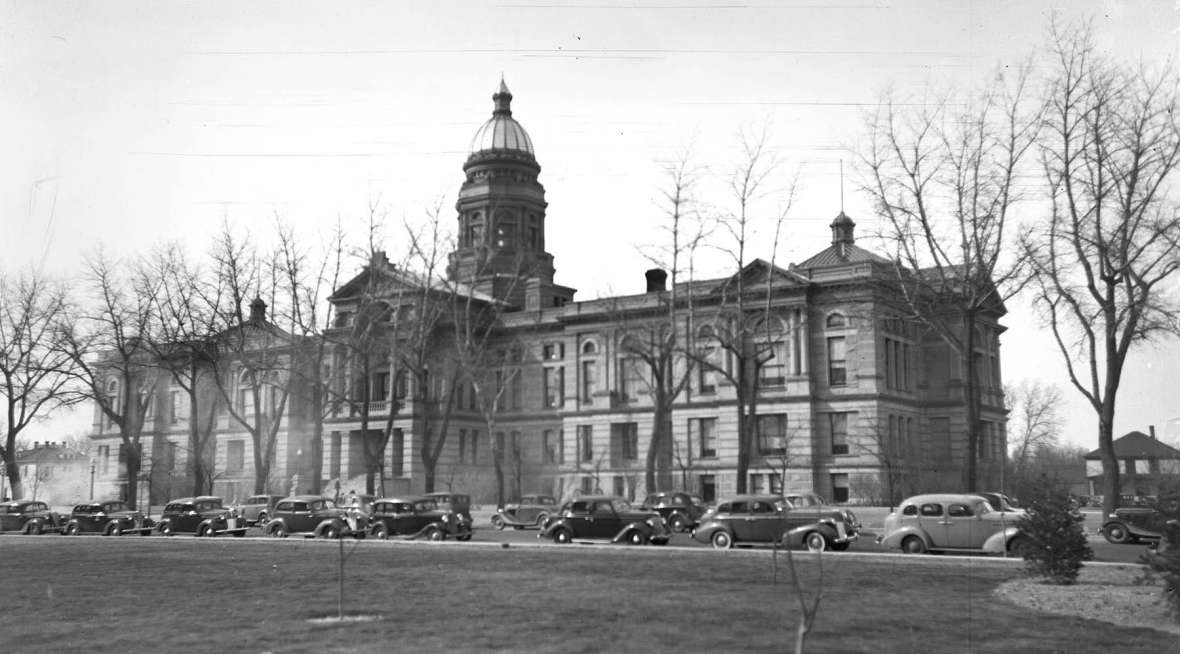
In 2014, after much deliberation, the Wyoming legislature agreed to a total renovation of the capitol. Construction began in 2016, and the building was closed. It's due to reopen July 10, 2019 for tours on Statehood Day, close again for final construction work and to open for general use late in 2019. The Capitol Square Project comprises four interrelated components: rehabilitation and restoration of the Capitol; replacement, relocation and expansion of the central utility plant; remodeling and expansion of the underground passageway that connects the Capitol to the Herschler Building, which is a large state office building immediately to the north; and rehabilitation and expansion of the Herschler Building.
The capitol was in dire need of upgrades to meet safety standards and modern technology issues. The rehabilitation included the reorganization of all mechanical, electrical and plumbing systems, two new elevators and interior staircases, restrooms on every floor and additional meeting rooms.
During the current renovation, significant historical elements were discovered that had been altered or covered over, such as coffered ceilings, cornices, ornate columns, arched doorways, tall windows, decorative door knobs and woodwork. Many of these elements have been restored to their original grandeur. The many works of art within the capitol symbolizing the history of Wyoming and depicting frontier life in the West, including paintings by William Gollings and murals by Allen Tupper True, have also been preserved.
The exterior was updated, and some of the worn sandstone and masonry was replaced or repaired. The capitol dome was swathed in covering for months of repairs. The dome is constructed of copper gilded in gold leaf. Some damaged parts of the dome were replaced and the dome panels were covered with gold leaf imported from Italy. The grand re-opening of the Capitol, set for July 10, 2019, will showcase the capitol dome as an icon of Wyoming that glows with renewed glory for all the state to celebrate.
Total costs were projected at $299 million, including $116 million for general rehabilitation and restoration; $19 million for central utility plant replacement and relocation; $19 million for the capitol extension and connecting tunnel to the Herschler Building; $57 million to remodel and expand the Herschler Building; $8 million for site work and landscaping; and $80 million for furnishings, fixtures, equipment, design services, contingency fund, and temporary space leases while the work was underway.
Wyoming’s 32nd governor, Matt Mead, stated, “The restored Capitol will stand for the next century—a symbol of Wyoming statehood and all it encompasses. It will welcome visitors and those who participate in government. The Capitol is, perhaps, the most important building in the state. It represents the ideals of the people of Wyoming now, just as it did when the cornerstone was laid 130 years ago.”
(Editor’s note: Special thanks to Wyoming Humanities, which supported development of this article. The book, A History of the Wyoming Capitol, by Starley Talbott and Linda Graves Fabian, was published by The History Press in late June, 2019).
Resources
Primary Sources
- The Cheyenne Daily Sun, May 19, 1887, 5, accessed May 27, 2019 via https://newspapers.wyo.gov.
- Feick, John Adam II, great-grandson of John Feick. E-mail to Starley Talbott. June 18, 2018.
- Girt, Rachel. “Saving Wyoming’s architectural treasure for future generations.” Wyoming Rural Electric News, July 2017, 16-19.
- Madsen, Wendy. Special projects manager, state of Wyoming. Personal interviews with authors. Nov. 10, 2017 and April 17, 2018.
Secondary Sources
- Ewig, Rick. “The Letters of John A. Feick.” Annals of Wyoming 59, no. 1 (Spring 1987): 2-14.
- Ewig, Rick, Linda Rollins and Betty Giffin. Wyoming’s Capitol. Cheyenne, Wyo.: Wyoming State Press, 1987, 1-15.
- Larson, T.A. History of Wyoming. 2d ed., rev. Lincoln: University of Nebraska Press, 1978, 79, 145, 155, 258, 259, 260.
- “Statement of Historical Significance.” National Register of Historic Places Nomination Form. Cheyenne, Wyo.: Wyoming State Historic Preservation Office, January 29, 1973.
For further reading
- Talbott, Starley and Linda Graves Fabian, A History of the Wyoming Capitol, due from Charleston, S.C.: The History Press, in late June, 2019.
Illustrations
- All photos are from the collections of the Wyoming State Archives. Used with permission and thanks.
